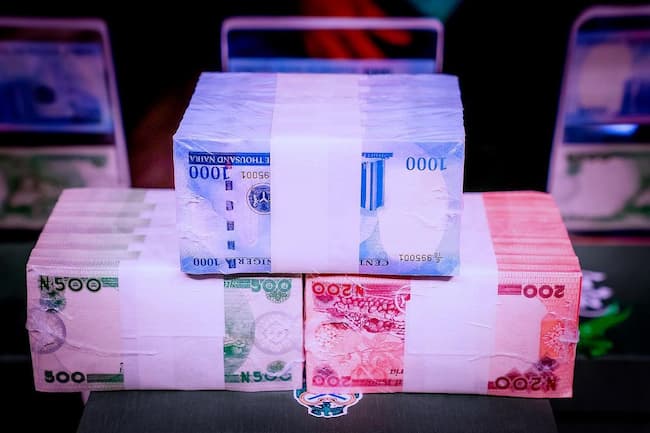The naira continued its depreciation against the US dollar in the official market, driven by insufficient foreign exchange (FX) liquidity to meet surging demand. As the local currency struggles to retain value, the US dollar remains the preferred choice for foreign currency transactions.
Despite this, there were pockets of positive developments. Exchange rates improved in the electronic FX platform and the parallel market. Data from the FMDQ platform indicated that the naira weakened by 0.65%, closing at N1,550 per US dollar in the official market, as market participants await the next round of intervention from the Central Bank of Nigeria (CBN).
Worsening Exchange Rates Despite Interventions
Last week, exchange rates deteriorated across various FX markets despite efforts by the CBN to boost liquidity. The central bank injected $124.6 million into the system to support the forex market’s liquidity balance.
On Monday, transactions in the Nigerian autonomous foreign exchange market were conducted within the range of N1,520 to N1,555 per US dollar, with the spot rate closing at N1,550/$. Meanwhile, traders noted a 0.2% appreciation in the naira to N1,546 per US dollar within the Electronic Foreign Exchange Matching System (EFEMS). This improvement was attributed to increased FX liquidity and greater market transparency.
Parallel Market Gains and Diaspora Inflows
In the parallel market, the naira saw further appreciation as demand for FX for import payments eased ahead of the Christmas season. Additionally, remittances from Nigerians in the diaspora helped to reduce demand pressures in the informal market. On Monday, the naira settled at N1,600 in the parallel market, strengthening by N30 from its previous level of N1,630 per US dollar, according to market checks.
Global Market Trends: Oil and Gold Prices
In global commodities markets, oil prices declined from recent highs due to reduced consumer spending in China, the world’s largest oil importer. Brent crude was trading at approximately $74.14 per barrel, while West Texas Intermediate (WTI) hovered around $70.94 per barrel.
Conversely, gold prices saw an uptick, supported by ongoing geopolitical tensions and declining U.S. Treasury yields. Investors are closely monitoring the Federal Reserve’s policy meeting, where another rate cut and insights into the 2025 economic outlook are anticipated. Spot gold traded at around $2,655.39 per ounce, as investors sought refuge in safe-haven assets amidst global uncertainties.
Outlook
The naira’s trajectory remains uncertain as the market awaits further interventions from the CBN. While diaspora remittances and easing demand pressures provide some relief, sustained FX liquidity and transparency will be crucial for stabilizing the local currency in the coming weeks.














